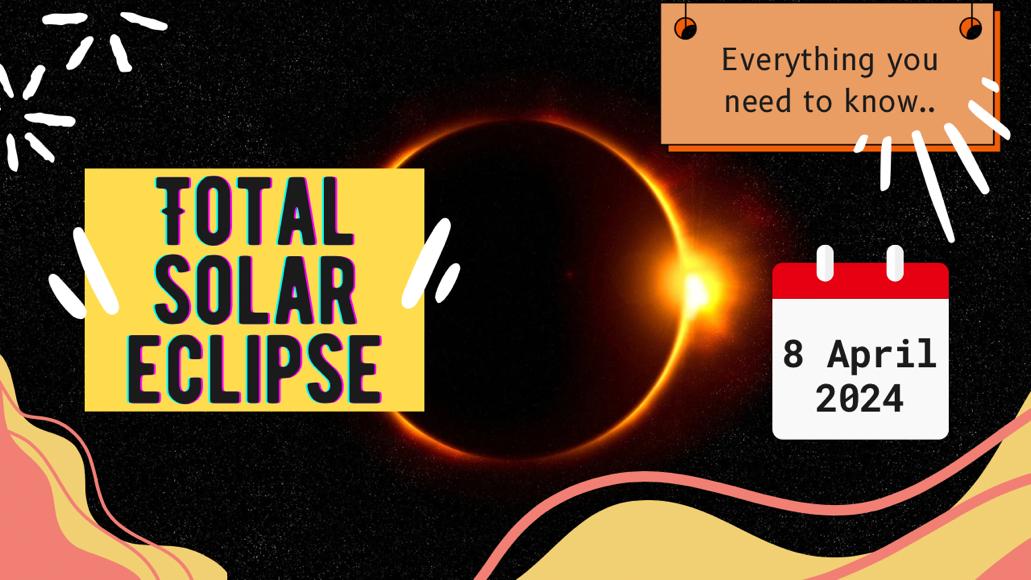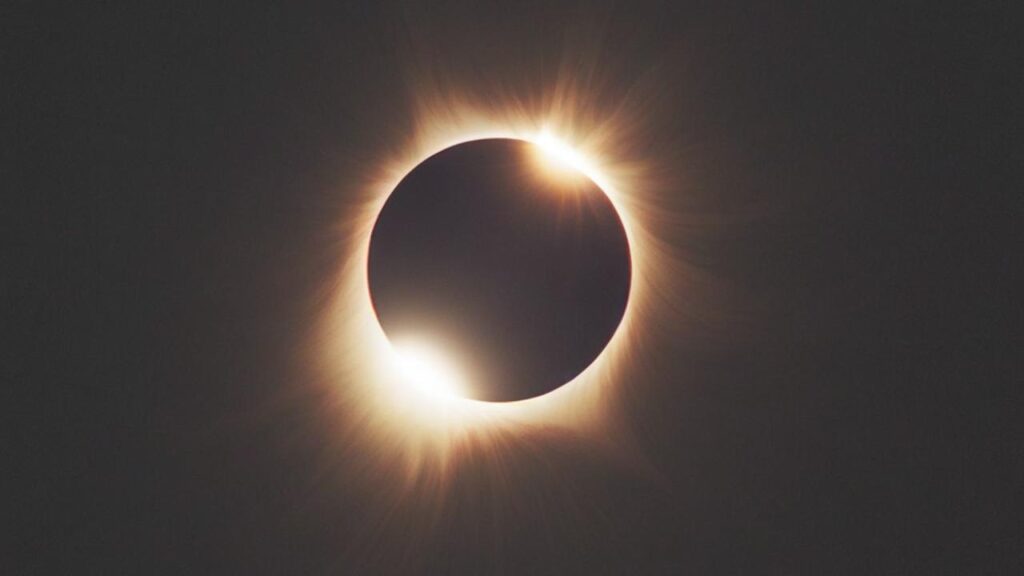Witness a Rare Celestial Spectacle On April 8, 2024, skywatchers in parts of North America will be treated to a rare celestial event: a total solar eclipse. During a total solar eclipse, the moon completely obscures the sun’s disc, creating a breathtaking display of darkness in the daytime. This particular eclipse will be the longest total solar eclipse in 54 years, with totality lasting for up to seven minutes in some areas.
What is a Solar Eclipse?
A solar eclipse occurs when the moon moves between the sun and Earth, casting a shadow on Earth’s surface. There are three main types of solar eclipses: total, partial, and annular. In a total solar eclipse, the moon completely covers the sun, while in a partial eclipse, only part of the sun is obscured. An annular eclipse occurs when the moon is too far away from Earth to completely cover the sun, leaving a ring of sunlight visible around the moon’s dark disc.
The April 8th Eclipse:
Path of Totality The path of totality for the April 8th eclipse will stretch across parts of Canada, the United States, and Mexico. The eclipse will begin in the Pacific Ocean off the coast of Mexico and then track northeast across North America.
The states that will experience totality include parts of Texas, Oklahoma, Missouri, Arkansas, Illinois, Kentucky, Tennessee, Georgia, North Carolina, and Maine. Viewing the Eclipse Safely It’s important to never look directly at the sun during a solar eclipse, even for a brief moment.
The sun’s intense light can cause permanent eye damage. The only safe way to view a solar eclipse is to use a specially filtered solar eclipse viewer. These viewers allow you to see the sun’s corona, the outermost layer of the sun’s atmosphere, which is visible only during a total eclipse.
The Science Behind Solar Eclipses
Solar eclipses provide scientists with a unique opportunity to study the sun’s corona. The corona is normally too faint to be seen with the naked eye, but during a total eclipse, the sun’s bright light is blocked by the moon, allowing us to see the corona’s faint glow. Scientists can use this information to learn more about the sun’s atmosphere and how it interacts with the solar wind.
The Cultural Significance of Eclipses
Humans have observed solar eclipses for centuries and have often been regarded with awe and superstition. In many cultures, eclipses were believed to be omens of bad luck or misfortune. Today, we understand the science behind eclipses, but they continue to be a fascinating natural phenomenon.
The total solar eclipse of April 8, 2024, is a rare event that should not be missed. If you are lucky enough to be in the path of totality, take some time to observe this awe-inspiring celestial spectacle safely.
Preparation and Planning: Skywatchers interested in witnessing the eclipse should plan their viewing location, considering factors like weather forecasts and accessibility. It’s also advisable to arrive at the viewing site early to set up equipment and secure a good vantage point.
Photographing the Eclipse: For those interested in capturing the eclipse through photography, specialized solar filters are essential to protect camera equipment and ensure clear, safe images. Techniques such as bracketing and long exposures can help capture the unique beauty of the event.
Community Events and Gatherings: Many cities and towns along the eclipse’s path organize community events, educational programs, and viewing parties for the public to experience the phenomenon together. These gatherings often include guest speakers, telescopes for public use, and activities for all ages.
Scientific Research Opportunities: Beyond the visual spectacle, the total solar eclipse presents a valuable opportunity for scientific research. Scientists and researchers from various fields, including astronomy, atmospheric science, and ecology, may conduct experiments and observations during the event to further our understanding of the natural world.
Historical Significance: Throughout history, solar eclipses have played a significant role in shaping scientific understanding and cultural beliefs. Documenting the observations and experiences of those who witness the eclipse can contribute to the historical record and provide insights into how societies perceive and interpret celestial events.
Safety Precautions for Pets and Wildlife: It’s not just humans who may be affected by the eclipse; pets and wildlife can also experience confusion or discomfort during sudden changes in light and temperature. Pet owners and wildlife enthusiasts should take precautions to ensure the well-being of their animals during the eclipse.
Artistic Interpretations: The eclipse inspires creativity and artistic expression, with many artists, writers, and musicians drawing inspiration from its awe-inspiring beauty. From paintings and poems to musical compositions and dance performances, the eclipse serves as a muse for creative endeavors across various mediums.
Educational Opportunities: Teachers and educators can use the eclipse as a hands-on learning opportunity in the classroom, exploring topics such as astronomy, geometry, and cultural history. Activities like building pinhole projectors or conducting simple experiments with light and shadow can engage students in scientific inquiry and critical thinking.
International Collaboration: The total solar eclipse transcends geographical boundaries, offering a shared experience that unites people around the world. Collaboration between scientists, educators, and enthusiasts from different countries fosters global understanding and appreciation for the wonders of the universe.
Post-Eclipse Reflection: After the eclipse has passed, taking time to reflect on the experience can deepen one’s appreciation for the natural world and our place within it. Whether through journaling, sharing stories with friends and family, or participating in online forums, sharing personal insights and observations can enrich the collective understanding of this extraordinary event.
Check this Out: Emma Stone’s Golden Globe (2024) Win for “Poor Things”
“Unlocking Financial Success: Your Path to Prosperity Begins Here! Dive into our latest blog for valuable insights, expert tips, and strategies that can transform your financial journey. Click here to embark on a wealth-building adventure: [financepedia]”


